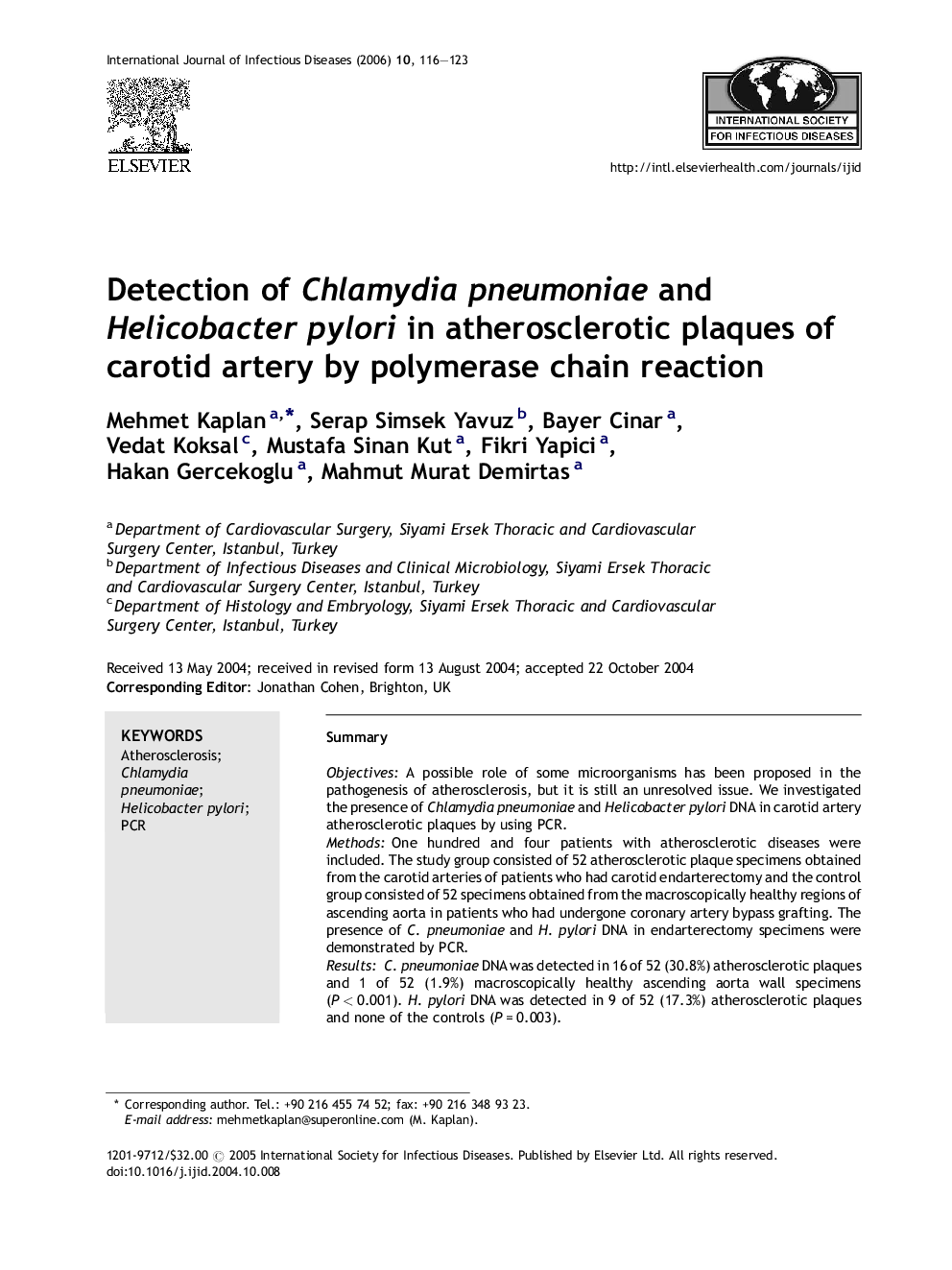| Article ID | Journal | Published Year | Pages | File Type |
|---|---|---|---|---|
| 3364658 | International Journal of Infectious Diseases | 2006 | 8 Pages |
SummaryObjectivesA possible role of some microorganisms has been proposed in the pathogenesis of atherosclerosis, but it is still an unresolved issue. We investigated the presence of Chlamydia pneumoniae and Helicobacter pylori DNA in carotid artery atherosclerotic plaques by using PCR.MethodsOne hundred and four patients with atherosclerotic diseases were included. The study group consisted of 52 atherosclerotic plaque specimens obtained from the carotid arteries of patients who had carotid endarterectomy and the control group consisted of 52 specimens obtained from the macroscopically healthy regions of ascending aorta in patients who had undergone coronary artery bypass grafting. The presence of C. pneumoniae and H. pylori DNA in endarterectomy specimens were demonstrated by PCR.ResultsC. pneumoniae DNA was detected in 16 of 52 (30.8%) atherosclerotic plaques and 1 of 52 (1.9%) macroscopically healthy ascending aorta wall specimens (P < 0.001). H. pylori DNA was detected in 9 of 52 (17.3%) atherosclerotic plaques and none of the controls (P = 0.003).ConclusionsThe higher incidence of C. pneumoniae and H. pylori DNA in atherosclerotic plaques suggests that these microorganisms may play a role in the pathogenesis of atherogenesis.
